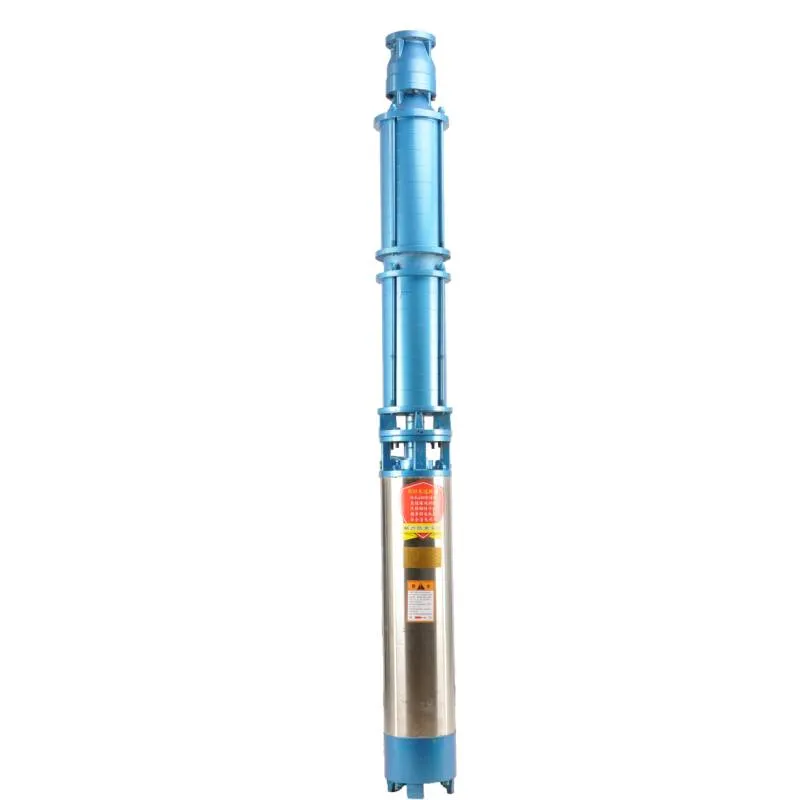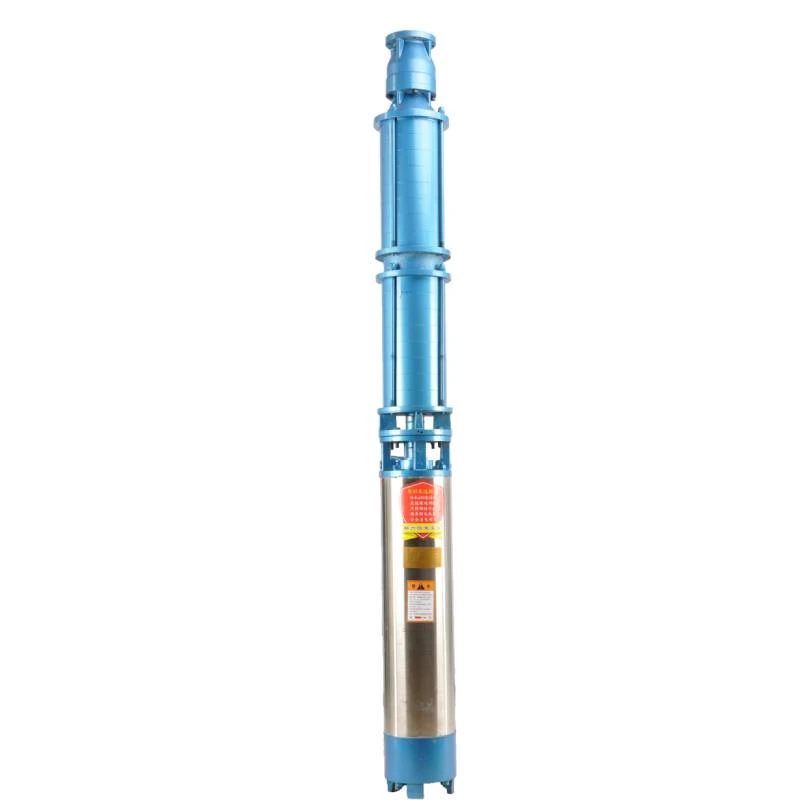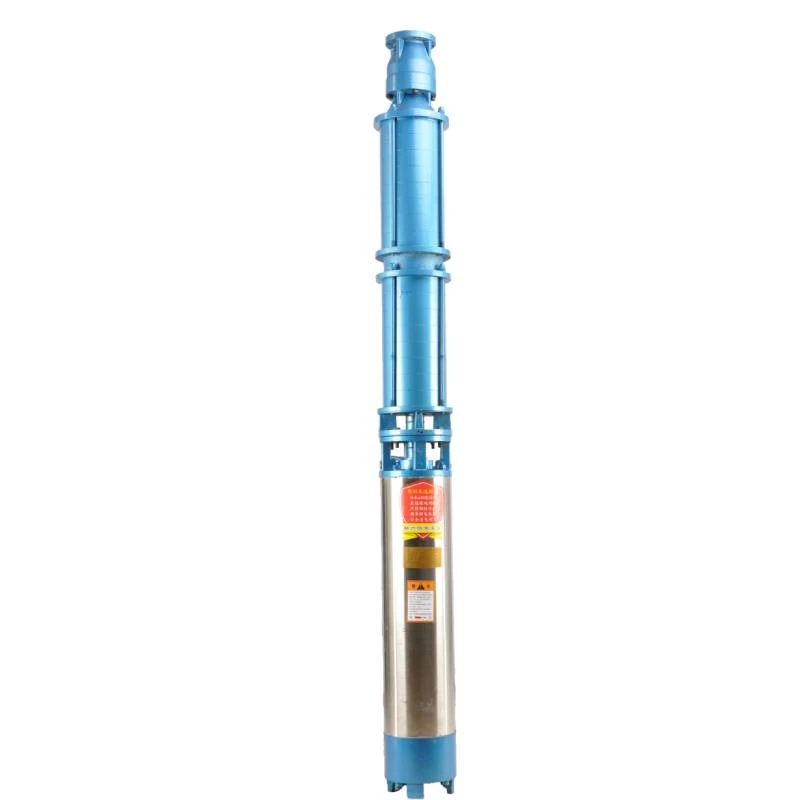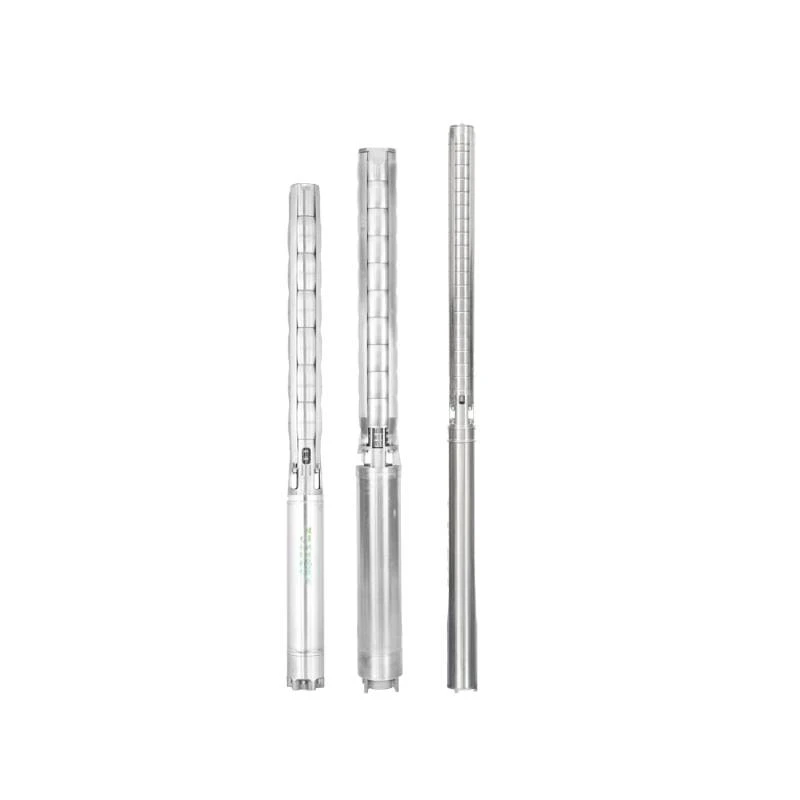Août . 26, 2025 14:38 Back to list
Water Filled Submersible Pump
A water filled submersible pump is engineered for optimal cooling, eco-friendliness, and high efficiency, especially in applications involving clean or slightly sandy water. This pump uses clean water inside its motor housing for heat dissipation, ensuring smooth operation without the risk of pollution often associated with oil-filled systems.

Because there’s no oil involved, the water filled submersible pump is the preferred solution for agricultural irrigation, domestic water supply, and drinking water wells. It avoids contamination of water sources, making it a more environmentally responsible and regulation-compliant choice in many countries.
It is also a quieter option during operation and lighter in weight compared to oil-filled pumps. Many households, farms, and commercial systems have transitioned to the water filled submersible pump for long-term performance with minimal environmental impact.
Water Filled Submersible Pump Price: Understanding What You Pay For
The water filled submersible pump price can vary based on motor capacity, flow rate, depth rating, materials used, and brand. Generally, the price ranges between moderately affordable to premium depending on specifications. Despite being slightly more costly than basic oil-filled units, the water filled submersible pump price is often justified by its longer lifespan and reduced maintenance needs.
These pumps typically feature stainless steel or brass construction, corrosion-resistant bearings, and high-precision components, which contribute to both durability and performance. Plus, many models come with advanced thermal protection and automatic shut-off functions to prevent overheating, all of which influence the water filled submersible pump price.
Ultimately, the real value lies in how much clean water it can deliver over time without performance degradation or contamination risk—an investment that pays off in safety and sustainability.
Which Is Better: Oil Filled or Water Filled Submersible Pump?
Which is better oil filled or water filled submersible pump is a common question, especially for those choosing a pump for the first time. The answer depends on the application and surrounding conditions.
For clean water applications—especially drinking water, fish ponds, or irrigation systems—a water filled submersible pump is often the superior choice. It's non-polluting, easier to maintain, and more environmentally sound. It also runs cooler in submerged conditions and provides safer, more stable long-term operation.
In contrast, oil-filled pumps may be slightly better at withstanding extreme environmental temperatures and can resist rust in particularly harsh conditions. However, oil leaks can cause serious environmental and operational issues, particularly in sensitive ecosystems or regulated industries.
So, when weighing which is better oil filled or water filled submersible pump, the water-filled model usually wins for clean, consistent water applications, while oil-filled options are sometimes used in industrial or rougher settings where contamination isn’t a primary concern.
Applications of Water Filled Submersible Pump Across Industries
The water filled submersible pump shines across a wide range of uses. In agriculture, it is trusted for reliable irrigation, even during peak seasons. In residential environments, it delivers fresh, uncontaminated water directly to households. In municipal setups, it ensures compliance with water safety regulations and supports public utility operations efficiently.
Because of their simple design and ease of repair, water filled submersible pumps are often deployed in remote or off-grid locations. They're compatible with solar power systems and inverter drives, making them adaptable to modern, eco-conscious infrastructure.
Even in commercial aquaculture, these pumps play a vital role. They preserve water quality while circulating large volumes, ensuring that aquatic life is not exposed to harmful substances that may leak from oil-filled alternatives.
Installation and Maintenance Tips for Water Filled Submersible Pumps
Installing a water filled submersible pump is generally straightforward, but a few best practices ensure maximum longevity. First, always verify that the water quality is within the recommended range (low sand and mineral content). Use a properly sized control panel or starter to protect the motor.
Make sure the pump is fully submerged before switching it on, as dry operation can damage the motor. Once operational, regularly inspect power cables, check discharge pressure, and clean the intake screen. For long-term storage, drain and clean the unit thoroughly and store it in a dry place.
Because the internal coolant is water—not oil—there’s no worry about replacing or monitoring lubricants. This significantly simplifies the maintenance cycle, making the water filled submersible pump ideal for users looking for minimal upkeep.
Water filled submersible pump FAQs
What is a water filled submersible pump used for?
A water filled submersible pump is widely used for applications that require safe, clean, and eco-friendly water delivery. These include drinking water wells, irrigation, aquaculture, industrial cooling, and municipal water systems. It’s especially valued in situations where contamination risk must be minimized.
How much does a water filled submersible pump cost?
The water filled submersible pump price varies by model and specification. Entry-level models for domestic use can start around $100-$300, while deeper well or higher-capacity pumps can range from $400 to $1,500 or more. Premium features like stainless steel casings or smart controllers can also affect pricing.
Which is better oil filled or water filled submersible pump?
For clean water environments, a water filled submersible pump is typically better due to its safety and non-contaminating nature. Oil-filled pumps may offer slightly more thermal stability, but they risk leaking harmful substances. Overall, water-filled pumps are the more environmentally conscious and regulation-compliant choice.
Can a water filled submersible pump be repaired?
Yes, a water filled submersible pump can be serviced and repaired. The absence of oil makes internal maintenance cleaner and safer. Common repairs include replacing bearings, checking windings, or addressing voltage issues. Spare parts are widely available for most reputable brands.
Is a water filled submersible pump suitable for sandy water?
Mildly sandy water can be handled by some water filled submersible pumps, especially those with built-in sand-resistant features. However, for heavy sand content, a sand-specific or slurry submersible pump may be better to avoid excessive wear. Always check manufacturer guidelines before use.
This is the last article
-
Water Filled Submersible Pump
NouvellesAug.26,2025
-
The Ultimate Solution for Clean
NouvellesAug.26,2025
-
SS Submersible Pump
NouvellesAug.26,2025
-
Reliable Water Extraction from Great Depths
NouvellesAug.26,2025
-
Deep Well Submersible Pump
NouvellesAug.26,2025
-
Borehole Submersible Pumps Price
NouvellesAug.26,2025
-
 Water Filled Submersible PumpA water filled submersible pump is engineered for optimal cooling, eco-friendliness, and high efficiency, especially in applications involving clean or slightly sandy water.Detail
Water Filled Submersible PumpA water filled submersible pump is engineered for optimal cooling, eco-friendliness, and high efficiency, especially in applications involving clean or slightly sandy water.Detail -
 The Ultimate Solution for CleanWhen it comes to efficient water delivery from underground or submerged sources, a submersible pump stands as the go-to solution for homes, farms, ponds, and industrial sites.Detail
The Ultimate Solution for CleanWhen it comes to efficient water delivery from underground or submerged sources, a submersible pump stands as the go-to solution for homes, farms, ponds, and industrial sites.Detail -
 SS Submersible PumpA ss submersible pump (short for stainless steel submersible pump) is the premium choice for environments that demand durability, corrosion resistance, and long-term performance.Detail
SS Submersible PumpA ss submersible pump (short for stainless steel submersible pump) is the premium choice for environments that demand durability, corrosion resistance, and long-term performance.Detail
